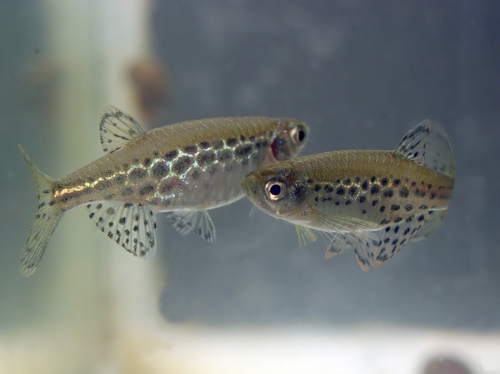Welcome to the dazzling world of Danios—those sprightly, vibrant swimmers that bring life to any aquarium. If you’re considering these playful fish as your next pet, you’re in for a treat!
Ever wondered, “How long do Danios live?” You’re not alone! These small, energetic schooling fish hail from the lush streams and rivers of South and Southeast Asia and have a few tricks up their fins when it comes to longevity.
Danios typically flash their colors in your tank for about 2-5 years, though with top-notch care, they can keep the party going for up to 7 years. Whether it’s the zesty Zebrafish, the lively Leopard Danio, or the charming Pearl Danio, each species brings its own pizzazz to the aquarium.
To keep your Danios thriving, remember a few key things: give them space to school around, maintain clean and oxygen-rich water, and serve a balanced diet. Here’s to long, healthy lives for your finned friends! Now, let’s dive into everything you need to know about keeping your aquarium vibrant and your Danios darting with delight!
Contents
Key Takeaways on How Long Do Danios Live?
- Danios are small, schooling fish that are native to South and Southeast Asia.
- The lifespan of a danio can vary depending on the species, but most live for around 2-5 years.
- With proper care and a healthy environment, some danios can live for up to 7 years.
Know the lifespan of other popular aquatic pets here:
Understanding Danios
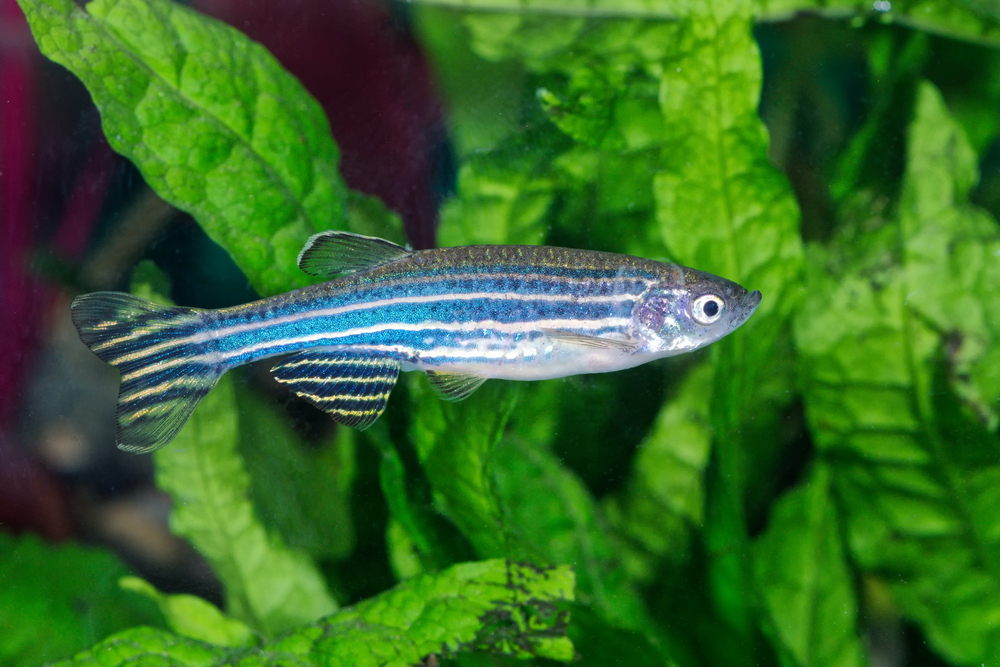
Danios are a popular freshwater fish that can be found in many pet stores. There are several different species of danios, including the zebra danio, pearl danio, leopard danio, and celestial pearl danios.
The scientific name for the zebra danio is Danio rerio, which is also known as the zebrafish.
Danios are known for their active and playful behavior, making them a great addition to any aquarium. They are also relatively easy to care for and can live for several years with proper care.
The lifespan of danios varies depending on the species and the conditions in which they are kept.
Zebra danios, for example, can live for up to five years in captivity, while pearl danios can live for up to seven years. Leopard danios and celestial pearl danios have a similar lifespan to zebra danios.
It is important to note that the lifespan of danios can be affected by a variety of factors, including water quality, diet, and stress.
Providing a clean and well-maintained aquarium with appropriate water conditions and a balanced diet can help ensure the health and longevity of your danios.
Natural Habitat and Origin
Danios are a type of freshwater fish that belong to the Cyprinidae family. They are native to Southeast Asia, including India, Pakistan, and Bangladesh. These fish are commonly found in rivers, streams, and ponds with clear water and moderate to fast-flowing currents.
In the wild, danios prefer to live in shallow waters with plenty of vegetation, rocks, and gravel. They are known to be highly adaptable and can thrive in a variety of water conditions, including slightly acidic to slightly alkaline water with a pH range of 6.0-8.0.
Danios are known to be active swimmers and prefer to live in schools of at least six individuals. They are often found swimming near the surface of the water and are known for their playful behavior.
In their natural habitat, danios feed on a variety of small insects, crustaceans, and zooplankton. They are also known to eat algae and other plant matter.
Physical Appearance and Behavior
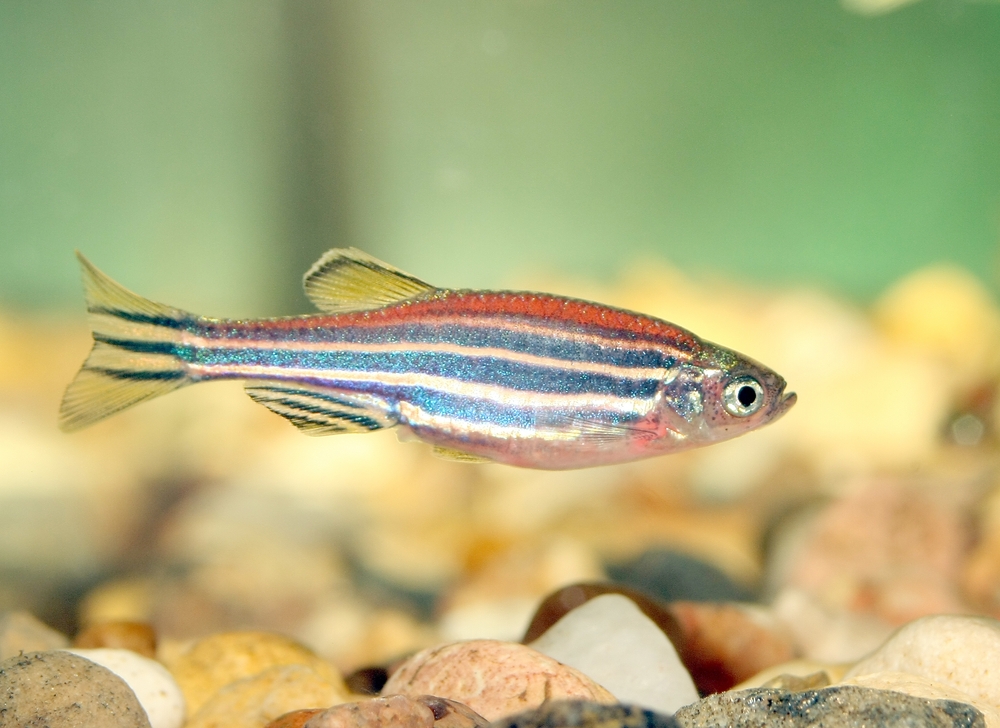
Danios are small, colorful freshwater fish that are popular among aquarium enthusiasts. They are known for their active and playful behavior, making them a great addition to any community tank.
In terms of appearance, danios are typically silver-gold in color with horizontal stripes running along their bodies. Some species may have iridescent scales that give off a shimmering effect in the light.
The most common color variation is orange, which can be found on the fins and tails of some species.
Danios are sexually dimorphic, meaning that males and females have different physical characteristics. Males tend to be more slender and have more vibrant colors, while females are slightly larger and have rounder bellies.
In terms of behavior, danios are social and peaceful fish that do well in groups of five or more. They are known for their playful nature and can often be seen darting around the tank or chasing each other.
Danios are also known to be jumpers, so it is important to have a tight-fitting lid on their aquarium to prevent them from escaping.
Lifespan and Health
Danios are generally hardy and easy to care for, making them a popular choice for both novice and experienced aquarists. When properly cared for, they can live for several years.
The typical lifespan of a danio is between 2 to 5 years. Factors such as water quality, diet, and stress levels can all affect their lifespan. It’s important to provide a healthy and stress-free environment for your danios to ensure they live a long and healthy life.
Stress is one of the biggest factors that can affect the health and lifespan of danios. High levels of stress can weaken their immune system, making them more susceptible to diseases and parasites.
It’s important to minimize stress in your danio’s environment by providing adequate hiding places, maintaining good water quality, and avoiding sudden changes in water temperature or pH.
Diseases and parasites can also affect the health and lifespan of danios. Common diseases include fin rot, ich, and velvet. Parasites such as anchor worms and gill flukes can also cause health problems.
Regular water changes and proper filtration can help prevent diseases and parasites from taking hold in your aquarium.
Danios in the Aquarium
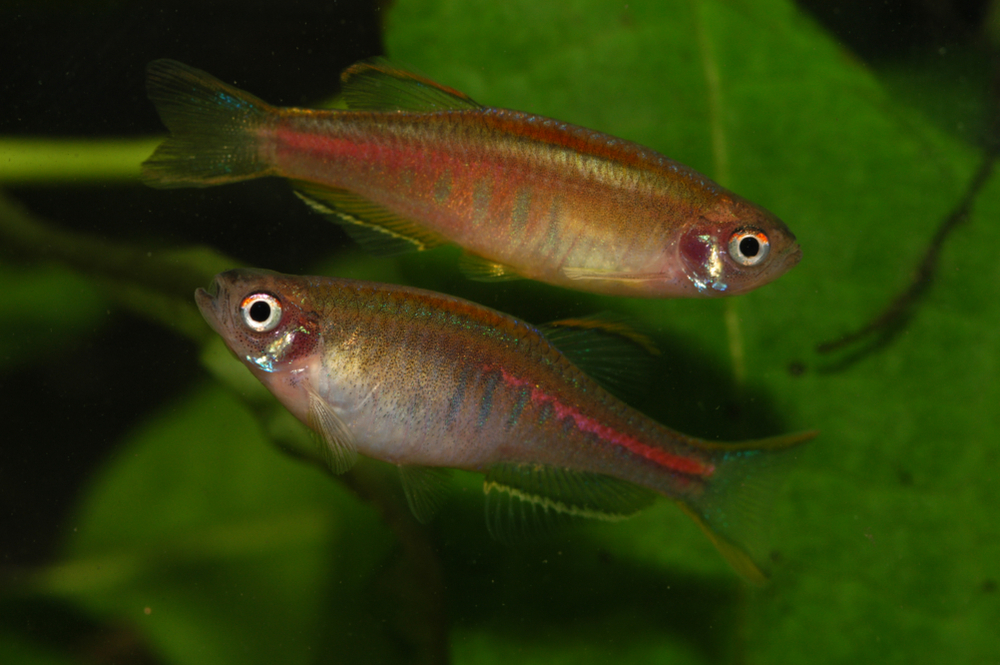
Danios are a popular freshwater fish species that are commonly kept in home aquariums. They are known for their active and playful behavior, making them a great addition to any community aquarium.
Danios are also relatively hardy and easy to care for, making them a good choice for beginner aquarists.
When it comes to aquarium size, danios are not particularly demanding. They can be kept in tanks as small as 10 gallons, although larger tanks are always preferable.
Danios are schooling fish, so it is recommended to keep them in groups of at least 6 individuals. A larger tank will allow for a larger school of danios, which will make them feel more comfortable and reduce stress.
In terms of tank conditions, danios prefer freshwater with a neutral pH and moderate hardness. They can tolerate a wide range of water temperatures, but a temperature between 72-78°F is optimal.
Danios are also relatively tolerant of different water parameters, but it is important to maintain good water quality through regular water changes and filtration.
When it comes to tank setup, danios do not have any specific requirements. They will appreciate a planted tank with plenty of hiding places, but they will also do well in a simple setup with just a few decorations.
A substrate of sand or fine gravel is recommended, as danios like to dig and sift through the substrate.
Diet and Feeding
Danios are omnivores, meaning they eat both plant and animal matter. In the wild, they feed on a variety of small insects, crustaceans, and algae. In captivity, it is important to provide a balanced diet that includes both protein and plant matter.
A high-quality flake or pellet food should be the staple of their diet. These foods are formulated to provide a balanced mix of protein, vitamins, and minerals. It is important to choose a food that is appropriate for the size of your danios.
In addition to flake or pellet food, danios also enjoy live or frozen foods. Brine shrimp and bloodworms are both excellent choices. These foods are high in protein and are a great way to supplement their diet. Live or frozen foods should be used as a treat and not as a staple of their diet.
It is important to feed your danios small amounts of food multiple times a day. This will help to mimic their natural feeding habits and ensure that they are getting the nutrition they need.
Overfeeding can lead to health problems and poor water quality, so it is important to feed them in moderation.
Breeding Danios

Breeding danios can be a rewarding experience for aquarists. Danios are egg-scatterers, meaning that they lay their eggs randomly throughout the breeding tank.
The breeding tank should be set up with a substrate for the eggs to attach to, and a filtration system to keep the water clean.
To encourage breeding, it is recommended to have a ratio of two females to one male. The breeding tank should also have plenty of hiding places for the females to retreat to if they feel threatened by the male.
Once the eggs are laid, they will hatch within 48 to 72 hours. The fry will then need to be fed small amounts of food several times a day. Crushed flakes or baby brine shrimp are good options for feeding fry.
It is important to remove the adult danios from the breeding tank once the eggs have been laid, as they will eat the eggs and fry. The fry should be kept in a separate tank until they are large enough to be introduced to the main tank.
Breeding danios can be a fun and educational experience for aquarists. With the right setup and care, the eggs will hatch into healthy fry that can grow up to be beautiful adult danios.
Choosing Tank Mates
When selecting tank mates for Danios, it is important to keep in mind that they are shoaling fish and prefer to be kept in groups of at least six. Therefore, it is recommended to choose other shoaling fish as tank mates.
Dither fish can also be added to the tank to help reduce stress levels for Danios. These fish are typically more active and will encourage the Danios to come out and swim around the tank more often.
When selecting other Danios as tank mates, it is important to choose species that are similar in size and temperament. Mixing different Danio species can result in aggression and territorial behavior.
Minnows and barbs can also be compatible tank mates for Danios. However, it is important to research the specific species to ensure they are not too aggressive or territorial.
It is recommended to avoid keeping slow-moving or long-finned fish with Danios as they may become targets for nipping.
| Recommended Tank Mates | Not Recommended Tank Mates |
| Other shoaling fish | Slow-moving fish |
| Dither fish | Long-finned fish |
| Similar-sized and tempered Danios | Aggressive or territorial fish |
| Minnows | |
| Barbs |
Caring for Danios

Danios are hardy fish that are relatively easy to care for. Here are some tips on how to provide the best care for your danios:
1. Care Level
Danios are considered to be easy to care for and are a good choice for beginners. They are hardy fish that can adapt to a wide range of water conditions.
2. Tank Requirements
Danios are active swimmers and require a tank that is at least 10 gallons in size. A larger tank is recommended if you plan on keeping a school of danios. The tank should be well-filtered and have a heater to maintain a stable water temperature.
3. Swimming Space
Danios are active swimmers and require plenty of swimming space. It is recommended to provide at least 2 gallons of water per danio. Danios are also known to jump, so make sure to have a tight-fitting lid on your tank.
4. Nano Fish
Danios are considered to be nano fish and are a popular choice for small aquariums. They are compatible with other small fish such as tetras and rasboras.
5. Java Moss
Danios enjoy swimming through plants and java moss is a great addition to their tank. It provides hiding places for the fish and helps to maintain good water quality.
Danios for Beginners
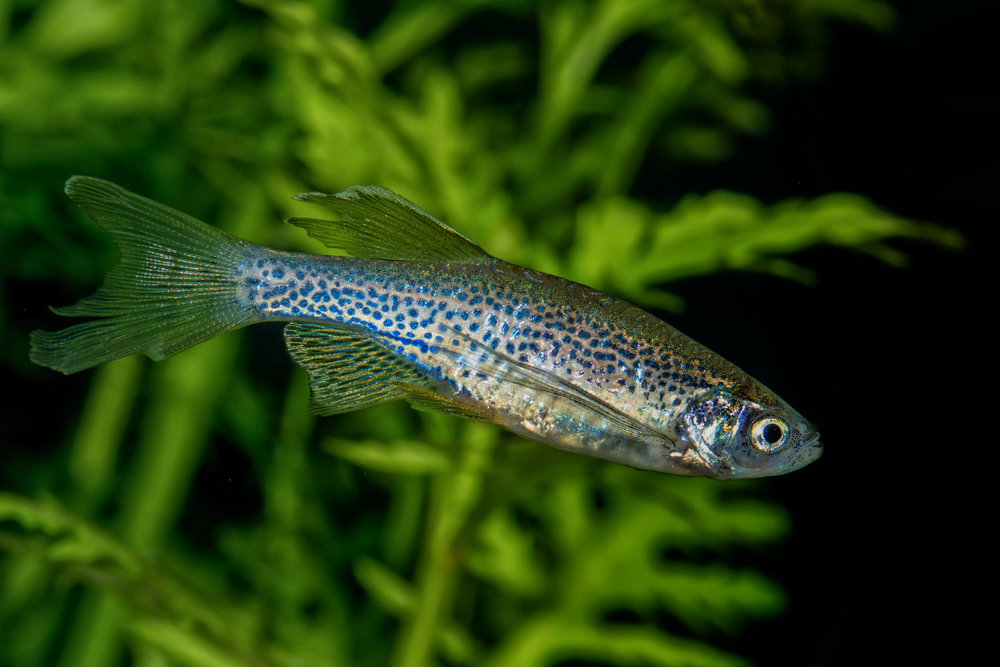
Danios are a great choice for beginner fish keepers due to their hardiness and ease of care. They are small, active, and come in a variety of colors, making them an attractive addition to any aquarium.
Danios are a hardy species that can tolerate a wide range of water conditions, making them an ideal choice for beginners.
They can thrive in temperatures ranging from 64 to 82 degrees Fahrenheit and prefer a pH level between 6.0 and 8.0. Danios are also tolerant of varying water hardness levels, but it is recommended to keep it between 5 and 19 dGH.
One of the most important things to consider when keeping danios is their tank size. They are active swimmers and require plenty of swimming space. A minimum of 10 gallons is recommended for a small group of danios.
Danios are omnivores and will eat a variety of foods, including flakes, pellets, and live or frozen foods. It is important to provide them with a balanced diet to ensure their health and longevity.
Frequently Asked Questions
What are some common tank mates for Zebra Danios?
Zebra Danios are peaceful fish and can coexist with a variety of other species. Some common tank mates for Zebra Danios include other small, peaceful fish such as tetras, rasboras, and guppies.
How long can Danios live in aquariums?
Danios can live for several years in aquariums if they are kept in a suitable environment and provided with proper care.
What is the average lifespan of Danios in captivity?
The average lifespan of Danios in captivity is around 2-3 years, although some individuals can live for up to 5 years.
How many Zebra Danios can be kept together?
Zebra Danios are social fish and should be kept in groups of at least 6 individuals. A good rule of thumb is to provide at least 2 gallons of water per fish.
What is the ideal temperature range for Zebra Danios?
The ideal temperature range for Zebra Danios is between 65-77°F (18-25°C). They can tolerate a wide range of temperatures, but they prefer cooler water.
How often should you feed Danios?
Danios should be fed small amounts of food 2-3 times per day. It is important not to overfeed them, as this can lead to health problems and poor water quality in the aquarium.

Ian Sterling, founder of Fishlab.com, began his aquarium journey over 30 years ago, driven by a deep fascination for fish and their diverse personalities. His website, Fishlab.com, is dedicated to making fishkeeping accessible and enjoyable, offering beginner-friendly guidance, expert insights, and a community for aquarists to connect and share experiences.


